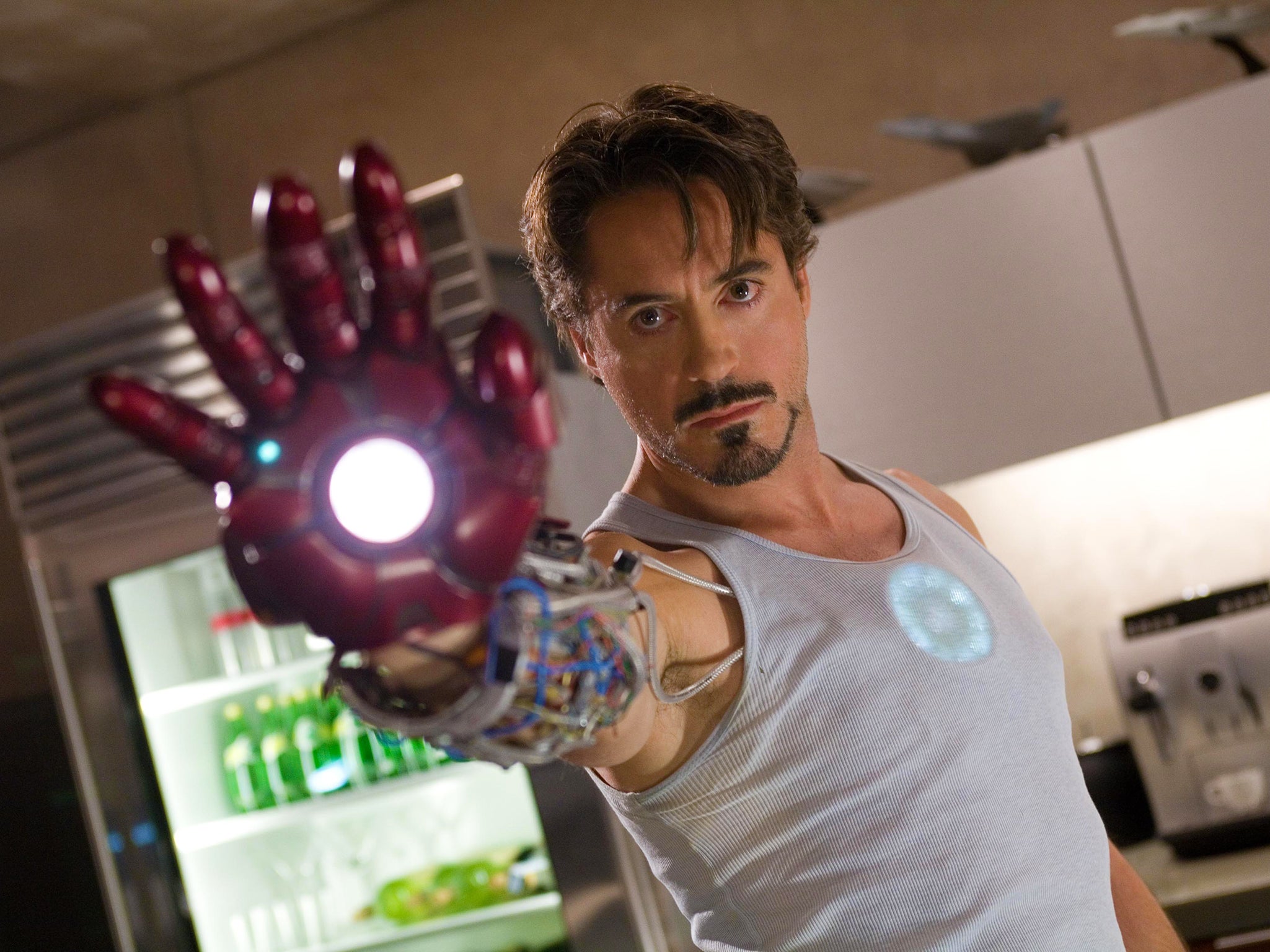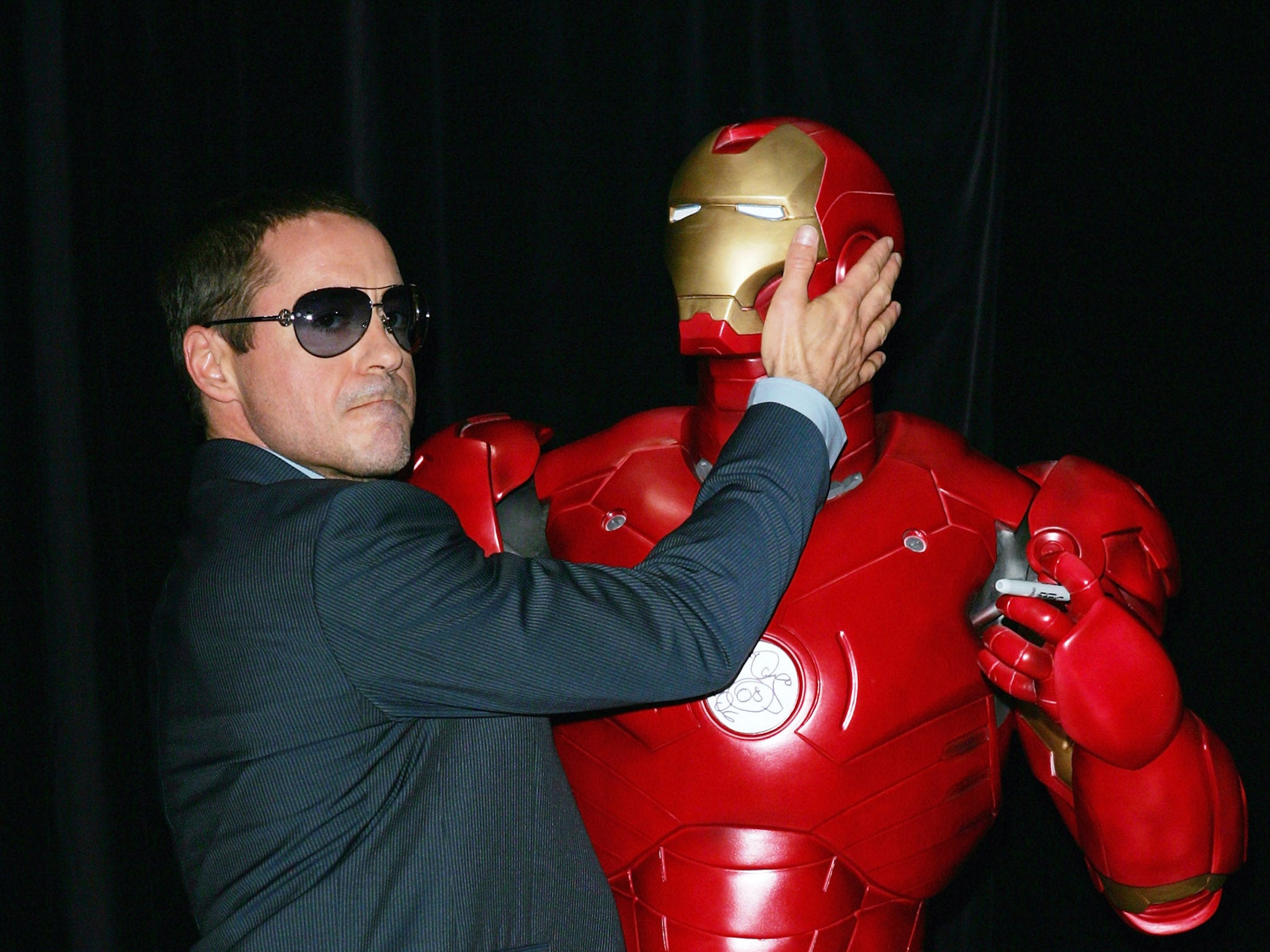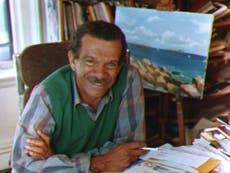Is Iron Man the most culturally significant Marvel film ever made?
‘Iron Man’ spawned an industry behemoth – but success was not guaranteed on Jon Favreau’s risky superhero flick. As the 2008 film enters the pantheon of American cinematic landmarks alongside ‘Goodfellas’ and ‘Citizen Kane’, Geoffrey Macnab looks at how its scandalous star helped secure its triumph

Robert Downey Jr is arrested. Again. He’s in rehab; he’s in court; he’s in prison; he has violated probation. In the late 1990s, the American actor was a subject of morbid fascination for the media. His brilliant Oscar-nominated performance as the lead in Richard Attenborough’s Chaplin (1992) was all but forgotten amid the ongoing scandals about his drug taking, alcoholism and erratic behaviour.
By the time Downey Jr was cast in Iron Man in late 2006, the actor had been “clean” for a number of years. His casting, however, still prompted speculation that this superhero flick could be “the riskiest film in history”. The 2008 movie was the first ever self-financed Marvel film, but the risk paid off. Its release spawned an industry behemoth. Iron Man was a crucial project for Marvel – a “make or break” moment, as its producer and now studio president Kevin Feige later described it. It made sense then that company executives did not want damaged goods such as Downey Jr, already in his early forties, playing the starring role of Tony Stark. “They were scared of him. They told me no, I couldn’t hire him, and it felt like too big of a risk,” director Jon Favreau told Superherohype in 2008. “They wanted me to go with somebody younger and somebody with less of a reputation.”
Fifteen years on, Iron Man has now been added to the US Library of Congress’s National Film Registry, which seeks to preserve works of cultural importance for future generations. While it isn’t the only superhero film in the pantheon – Christopher Reeve’s Superman (1978) is in there, as is Christopher Nolan’s The Dark Knight (2008) – Iron Man is the first Marvel entry to be feted. Despite Martin Scorsese’s 2019 protest that superhero films aren’t “cinema”, there you have it: Iron Man bracketed alongside Orson Welles’s Citizen Kane (1941) and Scorsese’s very own Goodfellas (1990) as landmarks in American film history.
Without Downey Jr, it’s unlikely that Iron Man would have been allowed entry to such an exclusive club. Favreau’s hunch that the troubled actor could give the film humour and humanity has since proven to be inspired. Those who have collaborated with Downey Jr tend to revere him. Documentary director Chris Smith, whose new film Sr. explores the relationship between Downey Jr and his underground filmmaker father Robert Downey Sr, remembers asking a leading cinematographer: who is the best actor you’ve ever worked with? “He [the cinematographer] came back immediately with Robert Downey Jr. He said that Robert will give you five takes that are all brilliant and they’re all different. He said he had never worked with somebody who had that level of talent,” recalls Smith.
Favreau knew that if he wanted to harness his star’s full wattage, he couldn’t let the superhero suit and hardware get in the way of his performance. The director tapped fully into Downey Jr’s shape-shifting brilliance: his flair for romantic comedy gleaned in scenes with Tony’s assistant, the prim Pepper Potts (Gwyneth Paltrow); his knack for slapstick; his lounge lizard Dean Martin-like charm; his little boy lost pathos; and occasionally his action heroics, too.
Downey Jr had fought hard for the role. He agreed to a screen test despite the fact he was an actor of a grade well past having to audition, and one who might have been thought to be slumming it by appearing in a superhero romp. He told the media he was “thrilled” to be playing Stark. He and Favreau proceeded to make the film on the hoof. Iron Man may have been a big budget action film but much of it was improvised. Jeff Bridges, who played the balding villain Obadiah Stane, later likened it to a “$200m student film”.
After a career spent appearing in what he described as “great little movies that no one sees”, Downey Jr clearly relished the chance to reach a mass audience. Salary didn’t seem uppermost in his mind – at least initially. He went on to become the highest-remunerated actor in Hollywood thanks to Stark. Downey Jr was paid a reported $500,000 (£412,570) for the first film in 2008 but was said to be earning an astronomical $75m (£62m) for the later Avengers films.
Iron Man is an anomaly compared to the Marvel movies that followed. The run-time is a little over two hours and the main cast consists of just a handful of characters. Compared to the three-hour-long epic that is Avengers: Endgame (2019) or the star-studded ensemble saga The Eternals (2021), Iron Man is a chamber piece. Notably, it also featured a contemporary political dimension that other MCU titles lack. The film’s opening section is set in US-occupied Afghanistan. There are scenes of torture and waterboarding; the enemies are not intergalactic warlords but jihadi warriors.

Any acts of courage by Iron Man are invariably accompanied by some comic pratfalls, which see the great superhero plummeting back down to earth. Tony Stark is a disarming and surprising character. He’s an industrialist and an arms dealer referred to early on as the “merchant of death” – a name also given to the notorious real-life Russian arms dealer Viktor Bout, who was only recently released from a US jail in a prisoner swap with American basketball player, Brittney Griner.
The first shot of Stark in Iron Man is not of his face but of his hand grasping the tumbler of whisky he is quaffing in the back of the US military vehicle driving him across the Afghan desert. He is a witty, glib womaniser who defends himself against charges of war profiteering by arguing that “peace means having a bigger stick than the other guy”. When a female journalist points out that he is the one “selling the sticks”, he responds by seducing her. In these opening scenes, Stark is established as a lecherous, alcoholic sleazeball – albeit one with a twinkle in his eye. The links between the character and the actor playing him are obvious. At times, when he is partying wildly, Stark seems like an older version of the self-destructive young drug addict Downey Jr so memorably played in the 1987 film Less than Zero, a film which critics later pointed out seemed like a parable of its star’s own turbulent life and career. Stark, though, is also a brilliant scientist with a formidable work ethic. In an interview earlier this summer with New York Magazine, Iron Man co-writer Mark Fergus name-checked Howard Hughes, Steve Jobs, Elon Musk and, surprisingly, Donald Trump (“fun before he became president”) as among his main inspirations for the character.
It’s debatable whether Marvel Entertainment, which was taken over by Disney a year after the 2008 release of Iron Man, would launch a franchise based around such a character today. After all, Stark is a long way removed from the youthful, clean-cut enthusiasm of Tom Holland’s Peter Parker aka Spider-Man, or the wholesome patriotism of Chris Evans’s Steve Rogers aka Captain America. True, Ryan Reynolds’ rogue mercenary in the Deadpool stories is even more louche and cynical than Tony Stark – but Deadpool is aimed at an older audience. Iron Man was intended as mainstream, family-friendly fare.
Everyone was saying superhero movies were over and Robert Downey was not necessarily a proven box office entity
It didn’t help the film’s commercial prospects that Iron Man as a character wasn’t nearly as familiar to audiences as other Marvel properties. Everyone knows Superman, Batman and Wonder Woman but in 2008, the scarlet-armoured, whisky lover remained relatively obscure. Of course, comic book fans knew him well enough; Iron Man had been around since the Sixties and had featured in various video games, animated films and TV superhero episodes. A general audience, though, had only a vague sense of Stark. That quasi-anonymity turned out to be to Downey Jr’s advantage. He could make the role his own. The point about Tony Stark is that you can’t help liking him. His charm easily outweighs his obnoxiousness. The character is like the Tin Man in The Wizard of Oz. Tony is similarly given his own makeshift heart (or at least an electro-magnet hooked up to a car battery), which keeps him alive after he is caught in a bomb blast.
At the time Iron Man was made, it was unclear whether audiences indeed had any appetite for Marvel-style escapist fantasies. As Favreau told chat show host Jimmy Kimmel in 2017: “Everyone was saying superhero movies were over and Robert Downey was not necessarily a proven box office entity.” Favreau and Downey Jr’s freewheeling approach to their subject matter has long since been vindicated. “All of our favourite movies are the ones that we watch over and over again and that we grow up with,” producer Kevin Feige commented earlier this month when the film was selected for the National Film Registry. “[Iron Man] has stood the test of time and it is still meaningful to audiences around the world.”
Iron Man may not yet be showing any signs of rust – but is it really an all-time classic of American filmmaking? That is probably the wrong question. No one is comparing Favreau to other directors on the National Film Registry list such as Scorsese, Welles, Stanley Kubrick, Billy Wilder and Alfred Hitchcock. Nonetheless, 30 features and close to $30bn (£25bn) in box office receipts later, the Marvel Cinematic Universe is the undeniable cultural phenomenon of our time. If Favreau hadn’t been ready to throw the dice on Downey Jr, the world of superhero movies would certainly not be the same.






Join our commenting forum
Join thought-provoking conversations, follow other Independent readers and see their replies
Comments